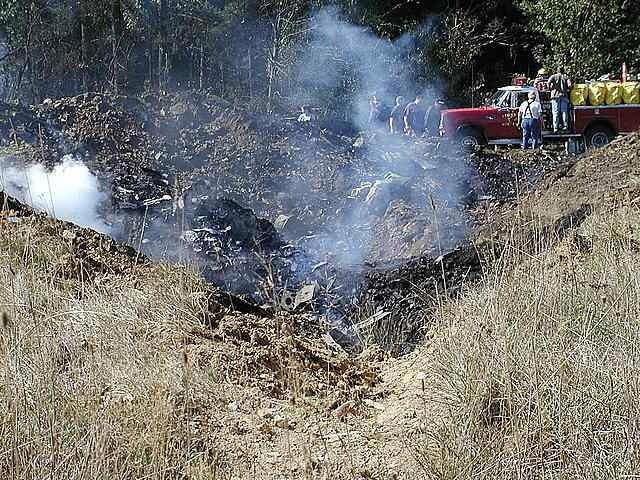|
SIOUX FALLS, S.D. — A B-1B bomber crashed in a remote area of southeastern Montana on Monday, but its four crew members survived after ejecting from the South Dakota-based aircraft, Air Force officials said. Two pilots and two weapons system officers ejected before the bomber crashed about 9:30 a.m. near Broadus, Mont., said Col. Kevin Kennedy, commander of the 28th Bomb Wing. He said they were taken by ambulance and air to two South Dakota hospitals, but none of them suffered life-threatening injuries.  A B-1B bomber. A B-1B bomber. Aerial photos of the crash show a massive charred area of prairie land void of recognizable aircraft parts. "No one likes to lose an aircraft. It's bittersweet that we did," Kennedy said during a news conference Monday afternoon. "Luckily, all four air crew are safely recovered." The plane, which was built in 1985, was based out of South Dakota's Ellsworth Air Force Base, one of only two bases in the U.S. that have B-1B crews. Ellsworth has 28 of the planes, including the one that crashed, the Air Force said. Kennedy said Ellsworth has temporarily shut down flights until his maintenance and operations group commanders can ensure that they can safely resume. The cost of a B-1B bomber is about $283 million, said Air Force spokesman Lt. Col. Allen Herritage. Kennedy said the Air Force will conduct a thorough investigation to determine the cause of the crash, which occurred about 170 miles southeast of Billings, Mont. The B-1B is a swing-wing bomber intended for high-speed, low-altitude penetration missions. The only other base with B-1B crews is Dyess Air Force Base in Abilene, Texas. Broadus is a town within the Powder River Training Complex, an 8,300-square-mile block of airspace centered just northwest of where South Dakota, Wyoming and Montana meet. An Air Force plan to more than triple the airspace, which is used in training exercises for B-1B and B-52 bombers based in the Dakotas, has been in the works for more than six years. The Air Force wants to add three "military operation areas" to create a fly space of about 27,500 square miles — an area larger than West Virginia. The last time a B-1B was destroyed in a crash was on Dec. 12, 2001, when a bomber involved in the war in Afghanistan slammed into the Indian Ocean near the island of Diego Garcia, Herritage said. A cause has never been determined, though the crew had reported having difficulty controlling the bomber. All four crewmen ejected safely, including the pilot and co-pilot, who were from Ellsworth. At the start of the war in Afghanistan, B-1Bs and B-52s were making almost daily bombing runs over the country and began pounding al-Qaida mountain hideouts in the Tora Bora region. In April 2008, an Ellsworth B-1B bomber caught fire after landing at al-Udeid Air Base in Qatar. The crew members all escaped safely. A month earlier, an Ellsworth B-1B collided with two emergency-response vehicles during landing after reporting an in-flight emergency at Andersen Air Force Base in Guam. Associated Press writer Robert Burns contributed to this story. http://news.msn.com/us/b-1b-bomber-crashes-in-montana-crew-ejects Editor's Note: I'm going to go out on a limb here and say I don't believe this was a real plane crash. Probably just another one of those wild fires that are consuming the western region of the United States right now. Everyone knows that planes practically disintegrate when they hit the ground. As demonstrated by the United Airlines, Flight 93, crash in Shanksville, Pennsylvania, on September 11, 2001. I also found this following image on someone's defunct website, but it still shows up in image searches. Well this image of "Shanksville" clearly shows debris, so I guess the idea that practically no debris was left at the Shanksville crash site must surely be wrong; however, a quick image search reveals this was really a Japan Airlines crash in 1985.
Comments are closed.
|
Archives
March 2021
|







 RSS Feed
RSS Feed